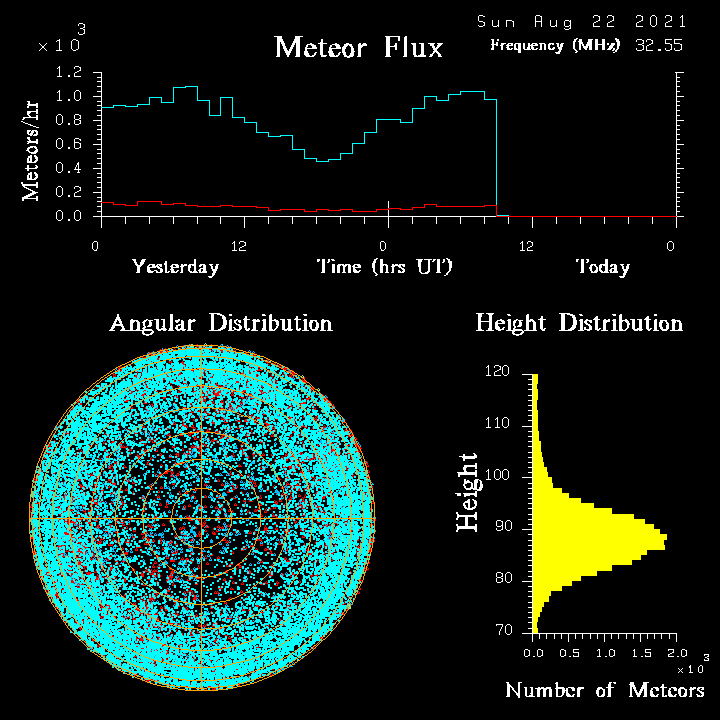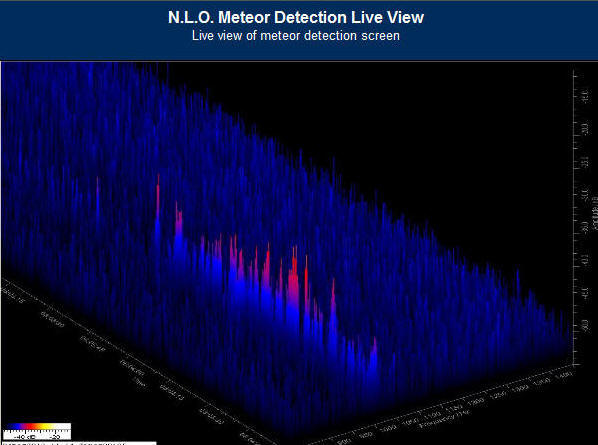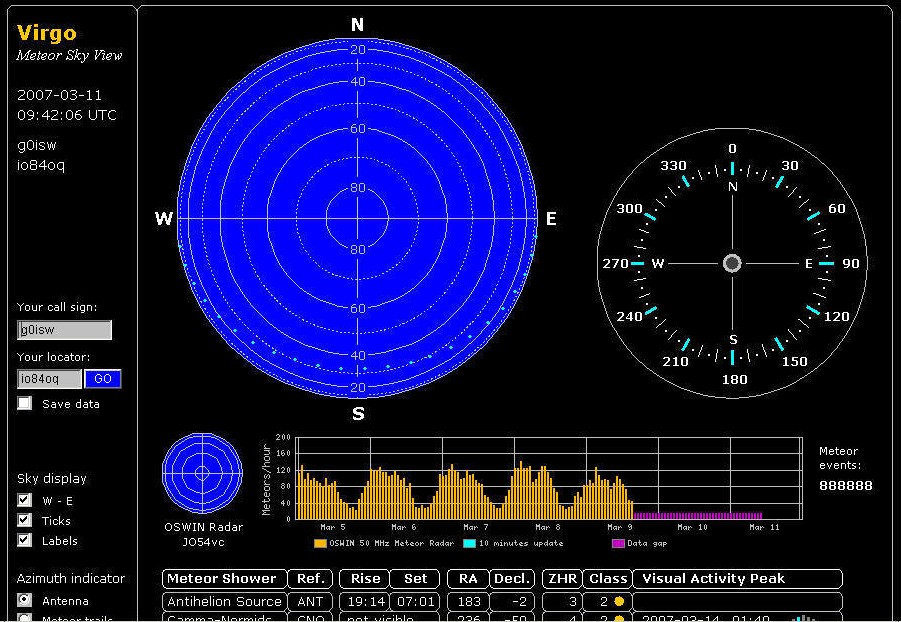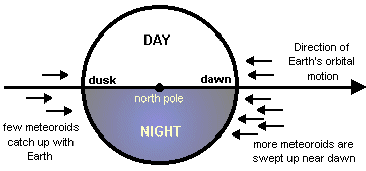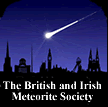
Station A
 Station B
Station B
If you cannot see the full index shown on the left edge of your screen, please go to my main page at
Meteor scatter (MS) is the reflection of radio signals from the ionised trails from Meteors (Iron Rocks) burning up in the upper atmosphere. This effect can be used by radio amateurs to make contacts at distances of up to around 2,400km. Meteors burn up in the atmosphere at a height of between 90-105km. The ionised meteorite trail will reflect VHF radio signals, which would otherwise travel straight into Space.
Meteor Scatter
radio contacts rely on multiple meteors to reflect small parts of each message
over a period of time, usually around
20 minutes,
but sometimes up to
1 hour. The
mostly metallic (iron) meteors burn up in the atmosphere and leave an ionised
trail of particles, which VHF radio signals can bounce off, for any time period
from
100 milliseconds
to over
2 minutes.
The frequent time for reflections is often around
250 milliseconds
or just a
quarter of a second!
You haven't time to speak normally, so you can use a series of audio tones to
represent each letter of the alphabet and play this through your radio using a
computer soundcard. You speed up the tones so that your short message instead of
lasting perhaps 20 seconds, is transmitted in under
0.25 seconds,
repeatedly over
and over again.
Imagine a
spy radio 'burst transmitter'
sending a secret
Morse Code message at
hundreds of letters per minute very, very quickly to avoid detection and
direction finding by the enemy! The techniques used for
Meteor Scatter
communication speeds are quite similar.
The receiving station listens and when a
meteor is in just the right place
he/she will hear your signal and then they slow your message down again to read it,
using their computer soundcard and
WSJT software.
You take
it in turns to transmit and receive in set periods of every 30 seconds. Over 20 minutes,
on average, the
entire message is transferred in both directions to complete the contact. In
this time maybe 4-6 meteors will occur.
Meteors
may come at any time, but sometimes they come in showers, which can be
predicted. During showers there are more
meteors than usual and QSOs (contacts) are easier
to make. Most work on
144 MHz
is done during
Meteor Showers.
A MS trail reflects
50MHz
for longer time than
144MHz, so it is
easier to work
MS on 50MHz. Actually you do not need to wait for a MS shower at all to make
QSOs, you can arrange skeds via the ON4KST 50/70/144/432 MHz online Chat.
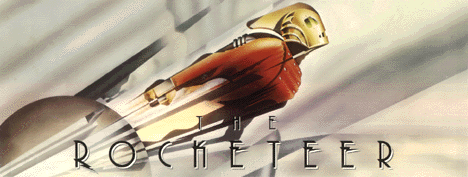
Meteor
Scatter signals sound like brief enhancements of the signal you are listening
for. Out of the noise pops your QSO partner at 59+ for mostly less than a
second, but then he fades fast away again. Sometimes bursts are many seconds
long and you may be lucky to make a QSO in one burst. But as ever on VHF you
have to be fast..
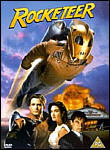
|
Meteor Showers |
|||
|
Meteor Showers |
Active
Period |
Approximate
activity
maximum |
Peak recorded Radio reflection hourly rate |
|
Quadrantids |
Jan 01-Jan 05 |
Jan 04 |
522 (2009) |
|
Delta Leonids |
Feb 15-Mar 19 |
Feb 25 |
353 (2010) |
|
Virginids |
Jan 25-Apr 15 |
Mar 24 |
299 (2009) |
|
Lyrids |
Apr 16-Apr 25 |
Apr 22 |
403 (2010) |
|
eta-Aquarids |
Apr 19-May 28 |
May 05 |
488 (2005) |
|
Comet 209P TBC?? |
May 24-May 31 | May 24/31 | 540 (2007) |
| Pegasids | Jul 07-Jul 13 |
Jul 10 |
495 (2007) |
|
Southern
delta-Aquarids |
Jul 12-Aug 19 |
Jul 28 |
|
|
Perseids |
Jul 17-Aug 24 |
Aug 12 |
527 (2009) |
|
a-Aurigids |
Aug 25-Sep 08 |
Aug 26 |
|
|
Delta-Aurigids |
Sep 05-Oct 10 |
|
298 (2007) |
|
Piscids |
Sep 01-Sep 30 |
Sep 20 |
396 (2009) |
|
Orionids |
Oct 02-Nov 07 |
Oct
14 |
653 (2014) |
|
Nov 14-Nov 21 |
Nov
19 |
700+ (2002) |
|
|
Puppid-Velids |
Dec 01-Dec 15 |
Dec
07 |
306 (2005) |
|
Geminids |
Dec 07-Dec 17 |
Dec
14 |
|
|
Ursids |
Dec 17-Dec 26 |
Dec 22 |
243 (2007) |
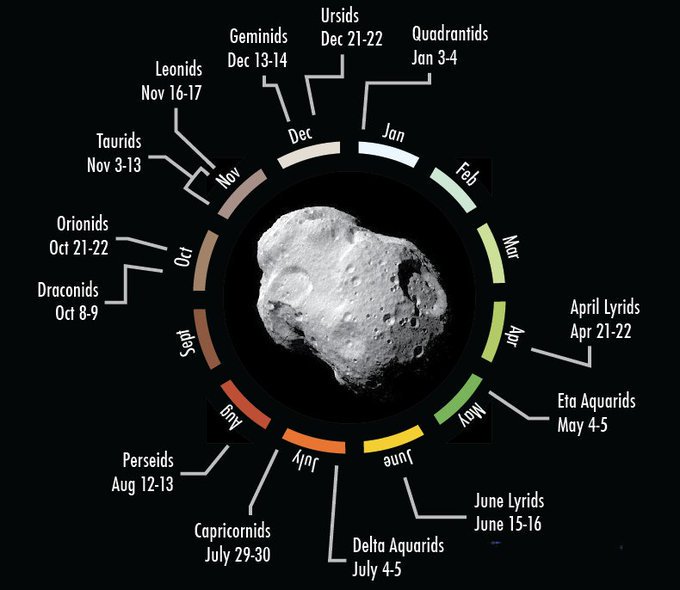
|
Amateur Radio Meteor Scatter |
When
transmitting signals within the Amateur Radio VHF bands you
should prepare yourself to make the QSO in small bits of mostly a few seconds.
There is a procedure for MS-QSOs agreed on in IARU Region 1. If we all follow
it, the QSOs are much easier.
PLEASE NOTE: Meteor Scatter European Region 1 guidelines suggest that if possible,
Northbound and Westbound transmissions should be made in the 1st period
and
Southbound and Eastbound transmissions should be made in the 2nd period.
This will avoid you causing QRM by transmitting when other local amateurs are listening! This guide is often ignored by stations who are unaware of it and results in havoc, with you trying to listen for weak signals at the same time that a nearby strong station is transmitting. (However for stations in central Europe it can be difficult to comply because different stations in the same Country may be working to the West and the East at the same time, so you should arrange a scheduled QSO on a frequency away from the main MSK144 mode centre of activity frequencies 50.280 MHz or 144.360 MHz in that case).
Note that in the USA they have chosen to transmit in the opposite periods to those shown above for European Region 1.
It is also best practice when calling CQ to indicate another frequency you are listening on, for example CQ 270 when calling on 50.280 MHz MSK144 mode, meaning you are listening for replies on 50.270 MHz and as soon as you hear one you QSY your transmissions there also.
|
METEOR SCATTER REPORTING SYSTEM |
|
|
The report consists of two numbers (often '26' as shown below) |
|
|
First number (burst duration) |
Second number (signal strength) |
|
2 : up to 5 sec |
6 : below S2 or below 5 dB |
|
3 : 5-20 sec |
7 : from S2 to S3 or from 5dB to 10dB |
|
4 : 20-120 sec |
8 : from S4 to S5 or from 10dB to 15dB |
|
5 : longer than 120 sec |
9 : above S5 or above 15dB |

|
PRIMARY EUROPEAN METEOR SCATTER FREQUENCIES & DATA MODES |
||
|
Old Region 1 Band plan had 50.200-50.300 MHz for Meteor Scatter (still largely in use as of 2025) |
||
|
FREQUENCY |
MODE |
COMMENT |
|
|
JT6M (30s periods)
|
Most European MS activity was seen here in 2016, but in 2017 has declined dramatically in favour of MSK144 mode on 50.280 MHz. |
|
|
ISCAT-B | Some European activity this mode in 2013, better performance than JT6M, but not adopted by many users with MSK144 preferred |
|
|
FSK441
|
Not ideal for 50MHz use, JT6M mode superior for longer reflections found on 6m |
|
|
PSK2k
|
Newer none WSJT mode, difficult to install, but fully automatic. Moved up to 50.360 MHz in 2015 now replaced by MSK144 mode |
| 50.280 MHz* (+/- 15 kHz) | MSK144 (15s periods) | 99% European activity this mode and frequency, seen here from 2018-2025, with 15s periods and extremely popular. Software in use is either WSJT-X by K1JT or MSHV by LZ2HV |
|
|
ISCAT-B | Some European activity this mode in 2014, better performance than JT6M, but not adopted by many users with MSK144 preferred |
|
New Region 1 Band plan since 2012 suggests 50.320-50.380 MHz for Meteor Scatter (largely still not adopted yet by European MS community) |
||
|
FREQUENCY |
MODE |
COMMENT |
|
|
ISCAT-B | Some European activity this mode seen here 2014 |
|
|
JT6M | Much more European activity this mode seen here 2015, but now MSK144 preferred by most |
| 50.360 MHz |
MSK144
|
Designated frequency as of 2018 for this newer mode, but 99% of activity remains on 50.280 MHz as of 2025 |
|
|
FSK441 | No European activity this mode seen here 2013 |
| 70.174 MHz | MSK144 | 100% European activity this mode seen here since 2018 |
|
|
was JT6M |
European activity this
mode seen here 2013, 2016 now in 2018 largely replaced by MSK144 mode on
70.174 MHz +/- 10 kHz |
|
|
FSK441 |
European activity this
mode last seen here 2017 now replaced by MSK144 +/- 5 kHz |
| 144.360 MHz | MSK144 | Designated frequency from 2018 for this newer mode |
|
|
FSK441 | European activity this mode seen here 2013 +/- 20 kHz appears to have been replaced by MSK144 |
|
NOTES |
||
|
*The new Region 1 (European) band plan, that came into effect on 1st January 2012, is largely being ignored by the VHF community, as all data modes in Europe were recommended to move above 50.300 MHz to free up space for more SSB voice, however 50 MHz is often capable of Intercontinental communications and there remains much US JT65 FT8 data activity below 50.300 MHz so that is where European stations remain to work them. |
||
|
|
400-2400km |
The lowest distance 400 km MS contacts can be very difficult to complete due to the high angles required, fewer meteors trails being in just the right place and nearby radio signal obstructions such as mountains, mid distance MS contacts around 600-1000 km being far easier. Whilst most stations use directional horizontal beams and 100W or more, success can be achieved with omni-directional antennas such as horizontal loops and surprisingly even with vertical colinears.
Reflections of radio signals can last from around 250 milliseconds (1/4 of a second) to 30 seconds plus, but the vast majority are extremely brief. It can take a long time to complete a QSO in the region of 30 minutes or an hour, unless there is a major Meteor shower. In November 2002 the Leonids shower was the best ever with over 700+ meteors each hour. So many meteors were striking the atmosphere that an almost continuous reflective layer was formed with amazing easily completed verbal QSO's, almost like Sporadic-E signals that lasted for many hours continuously. For Meteor Scatter the 50 MHz band is by far the best, 144 MHz is usable too but more difficult and 432 MHz and higher almost unheard of. To easily hear Meteor pings tune your transceiver to a distant strong VHF Band 1 TV station video carrier or VHF FM Radio station and you will hear nothing until the signal is reflected briefly by a passing meteor! Please note that during the Summer months Sporadic E (Es) may allow you to hear the TV or radio carrier continuously.
The Spanish TV Transmitter shown above, closed down in 2010, but in 2011 the TV Transmitter in Prague shown below was active. Sadly almost all Band 1 TV stations are closing down, replaced by UHF digital instead.
Unfortunately Band 1 analogue TV is being phased out in Europe and so the availability of these TV carriers is being much reduced for monitoring Meteor Scatter. There are some alternatives, such as the French GRAVES space surveillance radar system on 143.050 MHz CW.
It is also possible to carry out some interesting Radio Astronomy using the signals from Band 1 TV carriers and your Radio receiver to detect Meteor reflections and create imagery of the fireballs or meteors burning up in the atmosphere using SpectrumLab software.
|
||||||||||||||||||||||||||||||||||||||||||||||||||||||||||||||||||||||||||||
|
Meteor Scatter |
|||
|
|
|||
|
|
|||
|
Radio reflection detection by G7IZU
|
|||
|
Norman Lockyer Observatory Solar Planetary And Meteor (SPAM) Detection |
|||
|
Solar Planetary And Meteor (SPAM) Detection Forum
|
|||
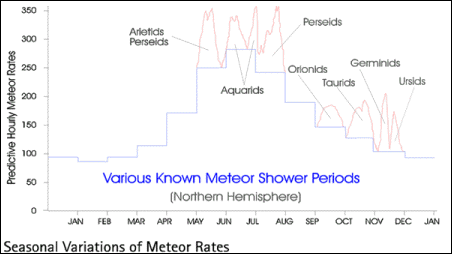
|
Radio Meteor Observatories Online (www.rmob.org) Scatter daily activity analysis (Click on thumbnail below) |
|
SKiYMET Meteor Scatter daily activity analysis |
|
|
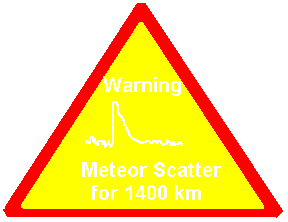
I used to record radio detected Meteor Shower ping activity on 55.250 MHz over several years using the excellent and reliable data from Dave Swan, however I have had to stop for a couple of years due to the primary transmitter in Portugal closing down. Dave in 2013 is now back again using 143.050 MHz. The table below shows the recorded data and is useful for working out the best dates for MS propagation, albeit random meteors occur at any time.
Please note that there are far more radio reflections and of longer duration at 55 MHz compared to 143 MHz, so in the table below 2004-2010 are 55 MHz observations and 2011 onwards are 143 MHz observations. The demise of Band 1 TV transmitters on 48 MHz and 55 MHz has effectively destroyed the best means for radio meteor observation sadly. If only here in the UK we could setup some replacement CW amateur radio transmitters in the far North and South to provide a reliable constant alternative as are in use in Belgium.
|
Meteor Showers |
Active
Period |
Approximate
activity
maximum |
Speed |
Visual ZHR |
Peak Radio Hourly Rate (RHR) 55.250 MHz (to 2010) or 143.050 MHz (from 2011) |
||||||||||||
|
(2004) |
(2005) |
(2006) |
(2007) |
(2008) |
(2009) |
(2010) | (2011) | (2012) | (2013) | (2014) | (2015) | (2016) | |||||
|
Quadrantids |
Jan 01-Jan 05 |
Jan 04 |
120 |
328 |
328 |
322 |
503 |
472 | 522 | 403 | 363 | 264 | 371 | 306 | 244 | ||
|
Delta Leonids |
Feb 15-Mar 19 |
Feb 25 |
3 |
N/K |
N/K |
N/K |
216 | 157 | 253 | 353 | 154 | 109 | |||||
|
Virginids |
Jan 25-Apr 15 |
Mar 24 |
5 |
N/K |
N/K |
N/K |
217 | 158 | 299 | 317 | N/K | 91 | |||||
|
Lyrids |
Apr 16-Apr 25 |
Apr 22 |
18 |
N/K |
|
147 |
317 | 197 | N/K | 403 | 254 | 170 | |||||
|
eta-Aquarids |
Apr 19-May 28 |
May 05 |
60 |
250 |
|
206 |
330 | 323 | N/K | N/K | 133 | 155 | |||||
|
Comet 209P TBC?? |
May 24-May 31 | May 24/31 | N/K | N/K | N/K | 338 | 540 | 309 | N/K | 500 | N/K | N/K | |||||
| Pegasids | Jul 07-Jul 13 |
Jul 10 |
3 |
N/K |
3 |
370 | 495 | N/K | N/K | N/K | 362 | 518 | |||||
|
Southern
delta-Aquarids |
Jul 12-Aug 19 |
Jul 28 |
20 |
275 |
|
419 |
500 | N/K | N/K | 396 | 242 | N/K | |||||
|
Perseids |
Jul 17-Aug 24 |
Aug
12/13 |
110 |
448 |
330 |
346 |
369 | 333 | 527 | 362 | 219 | 262 | 322 | ||||
|
a-Aurigids |
Aug 25-Sep 08 |
Aug 26 |
N/K |
N/K |
N/K |
N/K |
492 | N/K | N/K | N/K | N/K | N/K | N/K | ||||
|
Delta-Aurigids |
Sep 05-Oct 10 |
|
5 |
N/K |
N/K |
275 |
298 | N/K | N/K | N/K | N/K | ||||||
|
Piscids |
Sep 01-Sep 30 |
Sep 20 |
3 |
N/K |
N/K |
319 |
301 | 288 | 396 | 356 | 224 | ||||||
|
Draconids |
Oct 06-10 |
Oct 9 |
Very slow |
20 |
N/K |
N/K |
N/K |
N/K | N/K | N/K | N/K | 300 | N/K | N/K | N/K | ||
|
Orionids |
Oct 06-Nov 07 |
Oct 21 |
|
N/K |
303 |
|
350 | 315 | 471 | 364 | 653 | ||||||
|
Nov 14-Nov 21 |
Nov
18 |
100+ |
700 in 2002 |
N/K |
261 |
300 | 281 | 344 | 319 | 453 | 246 | 293 | 254 | ||||
|
Puppid-Velids |
Dec 01-Dec 15 |
Dec
07 |
10 |
150 |
306 |
279 |
304 | N/K | N/K | N/K | N/K | N/K | |||||
|
Geminids |
Dec 07-Dec 17 |
Dec
14 |
Medium |
120 |
325 |
521 |
434 |
486 | 435 | 469 | 473 | 394 | 325 | 303 | 437 | ||
|
Ursids |
Dec 17-Dec 26 |
Dec 22 |
10 |
162 |
234 |
237 |
243 | N/K | N/K | N/K | N/K | N/K | N/K | ||||
|
|
UK Radio Meteor analysis shows that the best times for working random Meteor Scatter is between 0000-1300hrs with few meteors outside these times, obviously Meteor Shower peak times do differ from this general rule. I have found operating FSK441 for random Meteor Scatter during the afternoon and early evening has not been as good, but DX can be worked with perseverance. Full Meteor Shower list can be found here. An excellent website dedicated to the study of live Meteor reflections is that of G7IZU.
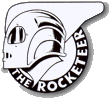
Below - Dave Swan's (G1BLO) radio meteor reflections at 55.250 MHz and live observation histogram at 62.1927 MHz as received in the UK, a very good indicator of meteor activity. The Geminids meteor shower peak on 14th December 2003 can be clearly seen at 0400hrs UTC on the December 2003 chart shown below.

When calling CQ with MSK144 (WSJT) on 144.360 MHz most amateurs have adopted the method of sending 'CQ 385' which indicates they are calling split by transmitting on 144.360 MHz BUT listening on 144.385 MHz for replies, this avoids congestion. When the original station hears your reply on 144.385 MHz they then QSY to 144.385 MHz and both stations complete the QSO on .385. They do not work split after the CQ is answered.

Shown below is a still image of my FSK441 QSO (using WSJT software) with ES6RQ on 21.12.2003 on 144.360 MHz a distance of 1116 miles and my best DX via Meteor Scatter so far. The burst captured below shows the signal I received from my friend 'Ants' in Estonia. I was only using 50 watts with my FT-847 and a 9 element Tonna Yagi at 150m asl to reply and you can see my MS signal report received in Estonia of 27.
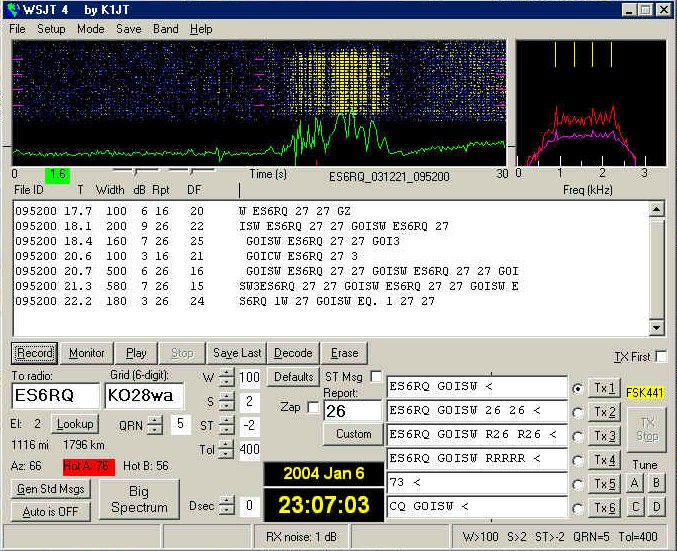
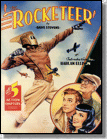
A map of Stations I have worked on 144MHz Meteor Scatter from IO84 is shown below. The maximum practical range for MS QSOs is considered to be around 2300km, with my best distance so far being 1796km. I have managed to work stations via MS in Iceland, France, Germany, Poland, Estonia, Czech Republic, Italy, Switzerland, Croatia, Bosnia, Serbia, Slovenia, Norway, England, Holland, Denmark & Spain.
Antennas: Most stations use directional long yagis mounted on rotators, with significant gain for MS contacts, I have used antennas with slightly larger beam widths and less gain such as Log Periodics or even an Omni directional horizontal loop or vertical collinear in recent years.
I witnessed on air in 2014 a few stations using vertical collinear base station aerials to good effect for MS contacts which surprised me very much, but clearly can also work. The exchanged signal reports were also much better than expected and not a lot different to other stations!
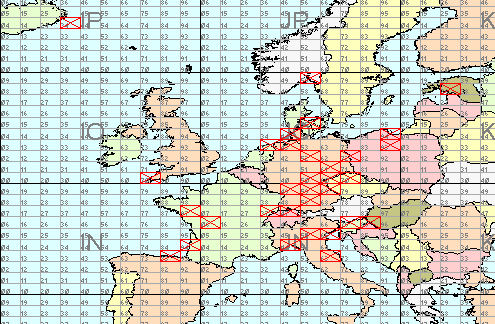

|
|
|
||
|
|
Send formatted VHF DX Cluster spot |
|
|
|
If you cannot see the full index shown on the left edge of your screen, please go to my main page at © Copyright G0ISW. Page last modified August 2025. All Rights Reserved.
|
|||
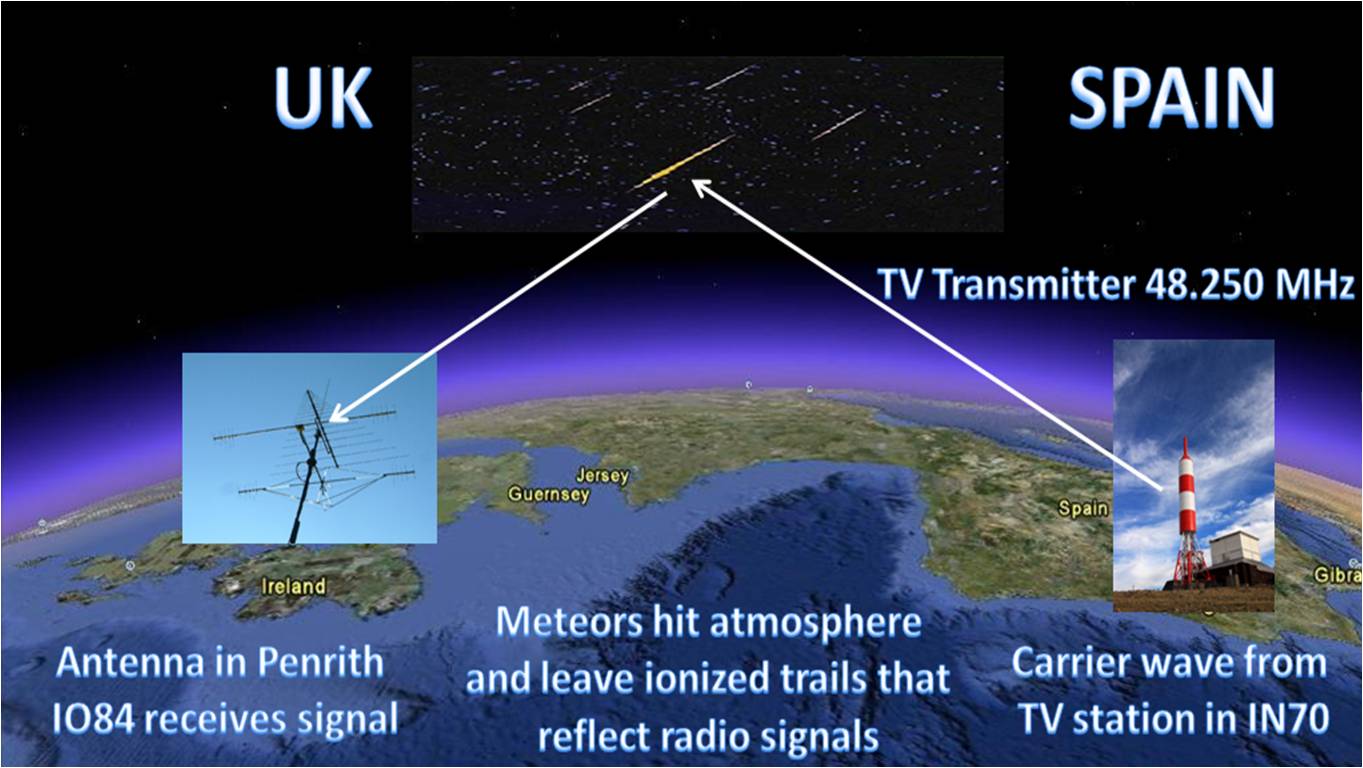
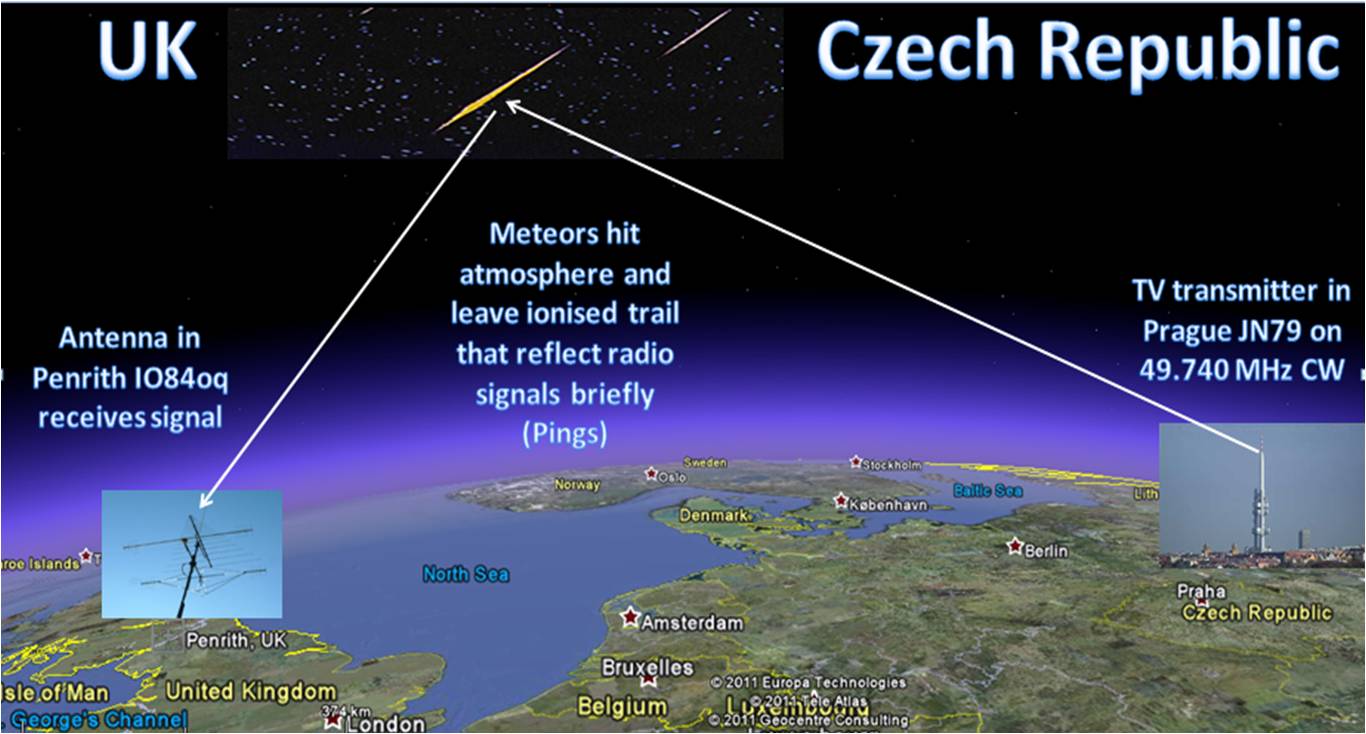
.jpg)
.jpg)
.jpg)

